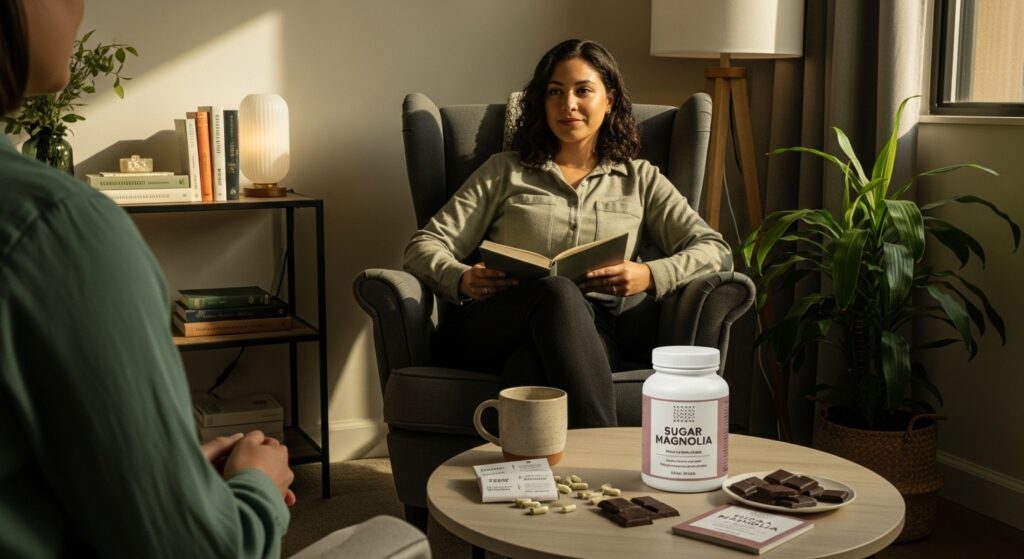Healing Trauma Gently: Microdosing as an Aid in Emotional Recovery
Trauma leaves deep emotional scars. Traditional treatments—from therapy to medication—can help, yet many survivors find themselves yearning for gentler, more holistic support. Microdosing psilocybin, once a fringe practice, is emerging as a potential ally. By taking very small, sub‑perceptual doses of psilocybin, people report feeling calmer, more open and better able to process difficult memories. In this guide, we explore how microdosing may aid emotional recovery, what science says about psilocybin’s effects on the brain, and practical considerations for incorporating it into a trauma‑healing journey.
Understanding Trauma and Emotional Recovery
Trauma can result from one big event—such as an accident, assault or natural disaster—or from ongoing stress, neglect or abuse. It triggers the brain’s fight‑or‑flight system, flooding the body with stress hormones. Over time, this heightened state can lead to anxiety, flashbacks, emotional numbness and difficulty regulating mood. While therapy and medication are standard treatments, they don’t always resolve lingering triggers or help people reconnect with their bodies and emotions.
Microdosing offers a different approach: rather than suppressing symptoms, it gently opens neural pathways so that feelings can surface and be processed. Psilocybin turns into psilocin in the body, which binds to serotonin receptors and increases brain‑derived neurotrophic factor (BDNF). BDNF promotes neuroplasticity—the brain’s ability to form new connections—which may help rewire patterns associated with traumatic memories. At the same time, psilocybin temporarily reduces activity in the default mode network, a brain system linked to self‑referential thought and rumination. This effect, described by researchers as the REBUS model (Relaxed Beliefs Under Psychedelics), allows individuals to revisit traumatic stories with more flexibility and less emotional charge.
Why Microdosing May Benefit Trauma Survivors
Unlike full “trip” doses, microdoses (usually 0.1–0.3 g of dried mushrooms) don’t produce hallucinations or overwhelming experiences. Instead, they deliver a mild uplift that many describe as feeling 10 % better. Early reports suggest microdosing may:
- Increase emotional resilience. Participants in microdosing surveys noted small‑to‑medium improvements in mood and decreases in anxiety. Trauma survivors often struggle with hyper‑vigilance and emotional reactivity; a subtle serotonin boost could help them stay grounded and process feelings more effectively.
- Facilitate memory reconsolidation. Because psilocin enhances neuroplasticity, it may make it easier to revisit difficult memories and form new, less distressing associations. Some people report that old triggers lose their intensity after a period of microdosing combined with therapy.
- Reduce inflammatory responses. Psilocybin lowers pro‑inflammatory cytokines such as TNF‑α and IL‑6. Chronic inflammation is linked to depression and anxiety, especially in trauma survivors whose stress response systems are over‑activated. By calming inflammation, microdosing could indirectly support emotional recovery.
- Break cycles of avoidance. Trauma often leads to avoidance of people, places or feelings that remind the individual of the event. Microdosing’s gentle openness may encourage survivors to engage in therapies like EMDR, exposure therapy or somatic practices.
How Psilocybin Works in the Brain and Body
Serotonin, Neuroplasticity and the REBUS Model
Psilocybin’s active compound (psilocin) binds to 5‑HT2A serotonin receptors in the brain. These receptors regulate mood, cognition and perception. Activation leads to increased BDNF, fostering neural growth and flexibility. It also quiets the default mode network—associated with rumination and rigid thought patterns—making it easier to revisit painful memories without the usual defensive responses. Researchers describe this state as REBUS, where deeply ingrained beliefs can be questioned and updated.
The Stress–Hormone Connection
Trauma recovery involves the HPA (hypothalamic‑pituitary‑adrenal) axis, which controls stress hormones like cortisol. Chronic stress keeps this axis overactive, contributing to anxiety and insomnia. Meanwhile, the HPG (hypothalamic‑pituitary‑gonadal) axis regulates reproductive hormones and interacts with the stress response. Studies on psilocybin and women’s health highlight how these axes overlap: stress disrupts hormones, and hormonal fluctuations influence stress. While the research is focused on menstrual cycles, the concept applies to trauma—psilocybin’s effect on stress circuits could help recalibrate hormonal balance and bring a sense of calm.
Potential Changes to Cycles and Sleep
Case reports suggest psilocybin might influence menstrual timing, causing early periods or bringing irregular cycles back to normal. In trauma survivors, dysregulated cycles and sleep issues are common; microdosing’s gentle effect on the stress response may indirectly improve both. In addition, many microdosers report better sleep quality due to decreased rumination and anxiety.
Real‑Life Stories and Early Research

Narratives from Survivors
Several survivors have shared how microdosing complements therapy. One woman with complex PTSD reported that microdosing gave her “a sense of courage” to talk about traumatic memories she had avoided for years. She paired microdosing with weekly psychotherapy and found that her nightmares lessened and her relationships improved. Another person who had experienced military trauma noted feeling “less on edge” and more empathetic at work.
Research Findings
- Mental health benefits. A self‑reported survey of microdosers found reductions in depression and anxiety scores compared to non‑microdosers. While not specific to trauma, these results suggest mood‑enhancing effects that could support emotional recovery.
- Menopause and midlife transitions. In studies on midlife women, psilocybin improved mood, reduced anxiety and helped regulate hormone cycles. Though focused on menopause, these findings show psilocybin’s potential to stabilize mood during significant physiological changes, which can also occur after trauma.
- Neuroplastic healing. Clinicians at psychedelic therapy clinics describe patients using microdosing between larger therapeutic sessions to “keep the work going” and maintain neuroplasticity. They caution that microdosing works best as part of an integrated healing plan, not a stand‑alone cure.
Practical Guidance for Microdosing in Trauma Recovery
If you’re curious about trying microdosing to support healing, here are some key considerations:
Start Low, Go Slow
Begin with a very small dose—around 0.05–0.1 g of dried mushrooms or a similarly measured product. Increase gradually if needed, but don’t chase dramatic effects. The aim is subtlety. On dosing days, keep your schedule light so you can tune in to your feelings.
Follow a Schedule
Common protocols include dosing every three days or following a pattern like “two days on, two days off.” These breaks prevent tolerance and allow your body to integrate. Many people note benefits on the day after dosing, so track your mood across multiple days to find your rhythm.
Integrate with Therapy
Microdosing is most effective when combined with professional support. Consider pairing it with trauma‑focused therapies like EMDR, somatic experiencing or cognitive processing therapy. Journaling, breathwork and body movement can also help process emotions that arise.
Be Mindful of Medication Interactions
Psilocybin affects serotonin receptors; if you’re taking SSRIs or other psychiatric medications, consult a knowledgeable clinician before microdosing. Combining serotonergic substances can increase the risk of serotonin syndrome. Also, if you have a history of psychosis or bipolar disorder, psychedelics may not be appropriate.
Source Wisely
Ensure your microdoses come from a safe, reliable source. Mushrooms should be grown and tested under controlled conditions. For precise dosing and convenience, many people opt for pre‑measured products like capsules or gummies. Sugar Magnolia offers several options designed for wellness and emotional support:
- Microdose capsules: Each vegan capsule contains a consistent 200 mg of our mushroom blend, making it easy to follow a schedule.
- Chocolate bar: Our artisanal bar divides into bite‑sized pieces for a decadent yet measured microdose.
- Gummies: Fruity and fun, these gummies deliver a pre‑set dose without the bitter mushroom taste.
- 500 mg gummies: For those needing a slightly higher microdose, these gummies offer a bit more potency while remaining gentle.
Build a Support System
Healing trauma is not a solo journey. Share your experiences with trusted friends, support groups or online communities. The Sugar Mama Program provides education, connection and discounts on products. It’s a safe space to learn from others and feel less alone on your path.
Conclusion: Choosing a Gentle Path Forward
Trauma recovery is deeply personal. Microdosing psilocybin isn’t a quick fix, but for some, it offers a gentle way to unlock emotional resilience, process memories and reclaim a sense of calm. Psilocybin’s ability to boost neuroplasticity, ease rumination and reduce inflammation makes it an intriguing complement to therapy and self‑care. Remember to start slowly, stay mindful and use it as part of a holistic approach that includes professional guidance and supportive relationships. With compassion and curiosity, microdosing could become a powerful tool in healing trauma gently and reclaiming your emotional well‑being.
Begin Your Gentle Healing Journey
Ready to take the next step? Explore our curated microdosing products designed for emotional recovery. Choose from precise capsules, indulgent chocolate bar, fruity gummies or higher‑dose 500 mg gummies to find your perfect fit. For deeper support, join our Sugar Mama program and connect with a compassionate community, exclusive resources and member‑only perks as you journey toward healing.

